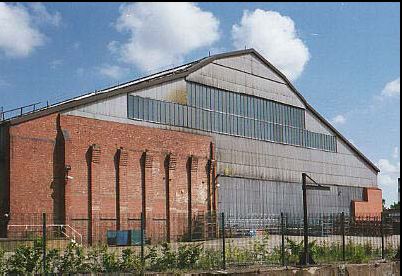In the competition for industrial real estate investments, more institutionally backed buyers are dabbling with infill land, but have not yet found the formula for success. Infill sites are considered non-traditional investments because they take more effort to understand and come with substantial risk. Large buyers can not make as big an investment in infill as when they purchase a portfolio of buildings. For this reason, and until institutions learn how to roll up these non-core properties, there is still a great opportunity for smaller entrepreneurial buyers to distinguish themselves as experts in the field.
Once, only builder/developers sought these parcels for immediate speculative development. Now, with the escalation of construction costs, spec development is generally unaffordable. Land buyers are toying with new strategies that include build-to-suit, land-banking, zone changing, and other exotic plays. One industrial REIT uses “pre-sales” to obtain finished building prices with no more than an open escrow and a site plan. Another company controls many key industrial sites throughout downtown that are on the edge of densification and growth. One developer has a lucrative niche by delivering custom buildings at ever higher prices to Asian users. Some simply scour the region for any sites where they can achieve lucrative up-zoning entitlements or develop for users they have in tow, like markets, drugstores and big box merchants. While each one of these strategies can be successful on their own, there is not enough of these opportunities to build an institutional-sized business.
However, infill land is still for professional investors. It takes experience to analyze alternatives. Significantly more money is required because lenders want cash flow to cover the loan. Delays can mean land will not rent for long periods of time. There are often zone changes, public hearings, at-risk deposits and other entitlement challenges to achieve results. Most non-professionals lack the skills and hiring professional talent will eat up profits. The complexity and uncertainty of land limits the competition from “trade” buyers and “mom and pops”. There is also considerable “on-thejob” learning as nuances become clear about use, traffic counts and densities, only after the deal is underway. The surprising thing is that even the most seasoned real estate investors are amazed at the multiple returns that can be achieved or how big the losses can be in the land game.
Land is a versatile and fluid investment from the time it is purchased and even through the life of the holding period. Landowners will see a myriad of options because until improvements are constructed, there are always new possibilities. Land leases, flips, different development scenarios, and unexpected uses are a few of the alternatives that will arise. If land can be successfully held and managed over a long period of time, landowners will receive high rates of annual return with appreciation amounts that greatly exceed the purchases of buildings. It is one area of the business where outsized returns are available for skilled professionals.

